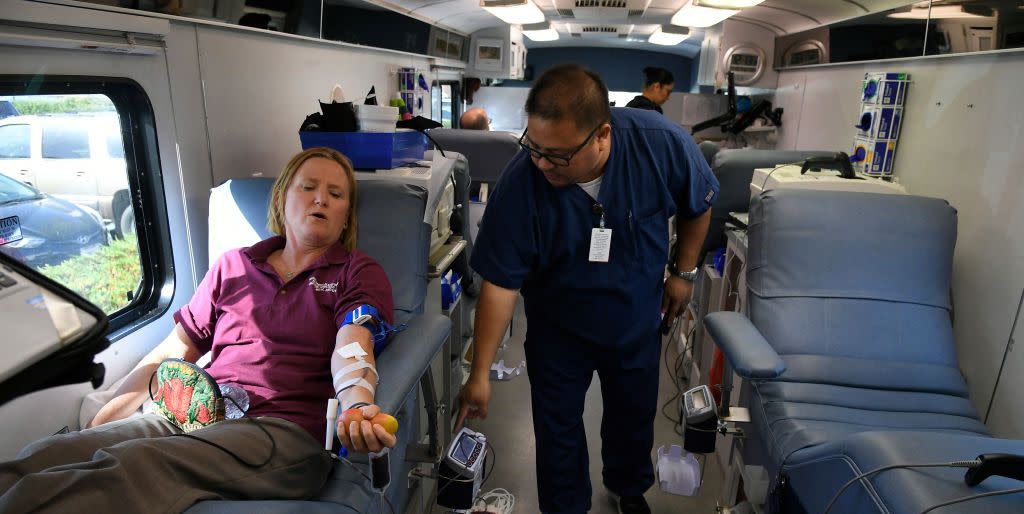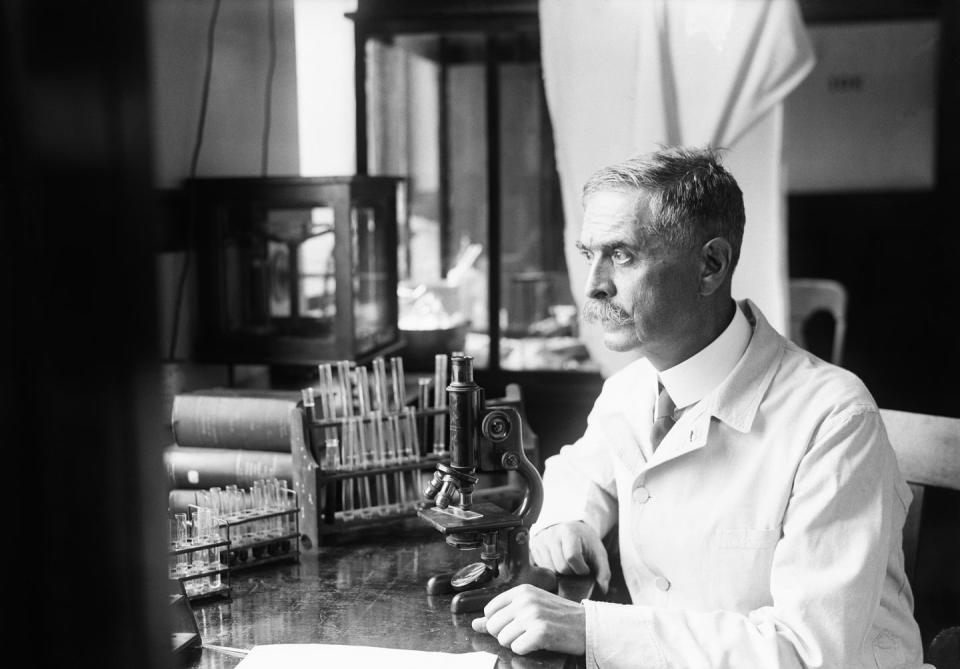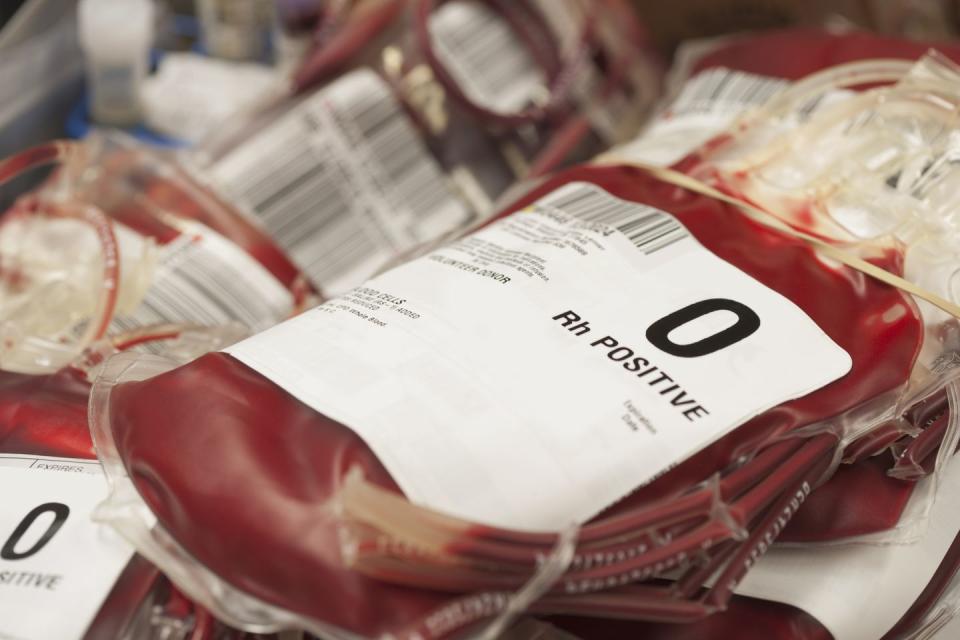What Different Blood Types Mean (And How To Find Out Yours)

Blood donation remains one of the easiest ways a person can save another's life. The Red Cross estimates that 6.8 million people donate blood in the U.S. every year, giving approximately 13.6 million whole blood and red blood cells.
But what exactly are those people giving?
A History of Healing
The earliest known human-to-human blood donation came before humans even knew what blood types were in 1818, when obstetrician James Blundell, transferred blood to a woman who had just given birth. Having watched many patients die in childbirth, Blundell wrote that his experimental procedure stemmed from being "appalled at my own helplessness."
For the rest of the century, scientists experimented with blood transfer. Not all of these ideas were successful-some advocated infusing human's with lamb's blood, for example. Then came an even more audacious idea-cow's milk, which was thought to be superior to actual blood. From 1873 through 1880, the milk-for-blood trend swept through the U.S. In 1878, a scientist named T.G Thomas wrote in the New York Journal of Medicine that by "injecting milk into the the veins we are imitating nature very closely in one of her most simply physiological processes."
Thankfully, soon an Austrian biologist would make a discovery that would change everything.
Landsteiner's Discoveries

Studying earlier experiments with animals, scientists had noticed that these foreign bodies were broken up in the human bloodstream by hemoglobin, which resides on red blood cells and carries oxygen through the body.
In 1901, Karl Landsteiner realized that similar reactions were occurring with human-to-human blood transfers. Common conditions, like shock or jaundice, could be coming from these failed transfers.
His work attracted moderate attention- a successful blood transfusion was made using his work in New York in 1907, a far cry from the milk days. But in 1909, when Landsteiner was able to classify human blood into a variety of types, his work really took off. These groups are what are commonly known today as A, B, AB, and O groups.
Later in life, Landsteiner moved to New York. There in 1937, with forensic scientist Alexander Weiner, he discovered the Rhesus factor. Named after a similar property found in the Rhesus monkey, all blood has a Rhesus (Rh) factor, either positive or negative.
Both of these discoveries would become crucial to how blood transfers work today.
So What Are Blood Types?

All blood carries antigens, substances that alert the immune system to spring into action, and each person carries a unique antigen makeup, falling into general groups-what we have come to know as Landsteiner's blood types. While it would be several decades until the exact chemical makeup of antigens were discovered, with help from scientists like Elvin Kabat, Landsteiner laid down the basics.
The four major groups are decided by if they do or do not have two antigens, commonly known as A and B. Each of these antigens have an Rh factor, a positive or a negative. That's what leads to the commonly known blood types A+, A-, B+, B-, O+, O-, AB+, AB-.
Immunology has shown that there are over 600 types of antigens, and that some people don't even have an Rh charge. Those with Rhnull are sometimes described as having "golden blood" for their blood's potential healing qualities, but rare blood types often lead to complications to the people who live with them.
How Do I Find Mine?
There are several ways to find out your blood type, and if you're eligible the easiest way is donating blood. You'll likely receive your blood type results in the mail a few weeks later. Calling a doctor who has drawn your blood earlier could also work. But if you can't give blood or don't have access to a past doctor, there are kits on Amazon for under ten bucks.
As a last resort, you could always ask your parents. Blood types are often passed down to children, and while you won't be able to narrow your blood type down precisely, you can at least approximate what your blood type might be thanks to a helpful chart like this one. If you're a parents (or a curious kid), it could be an easy way to learn a little about what connects your family and Punnet squares at the same time.
('You Might Also Like',)

